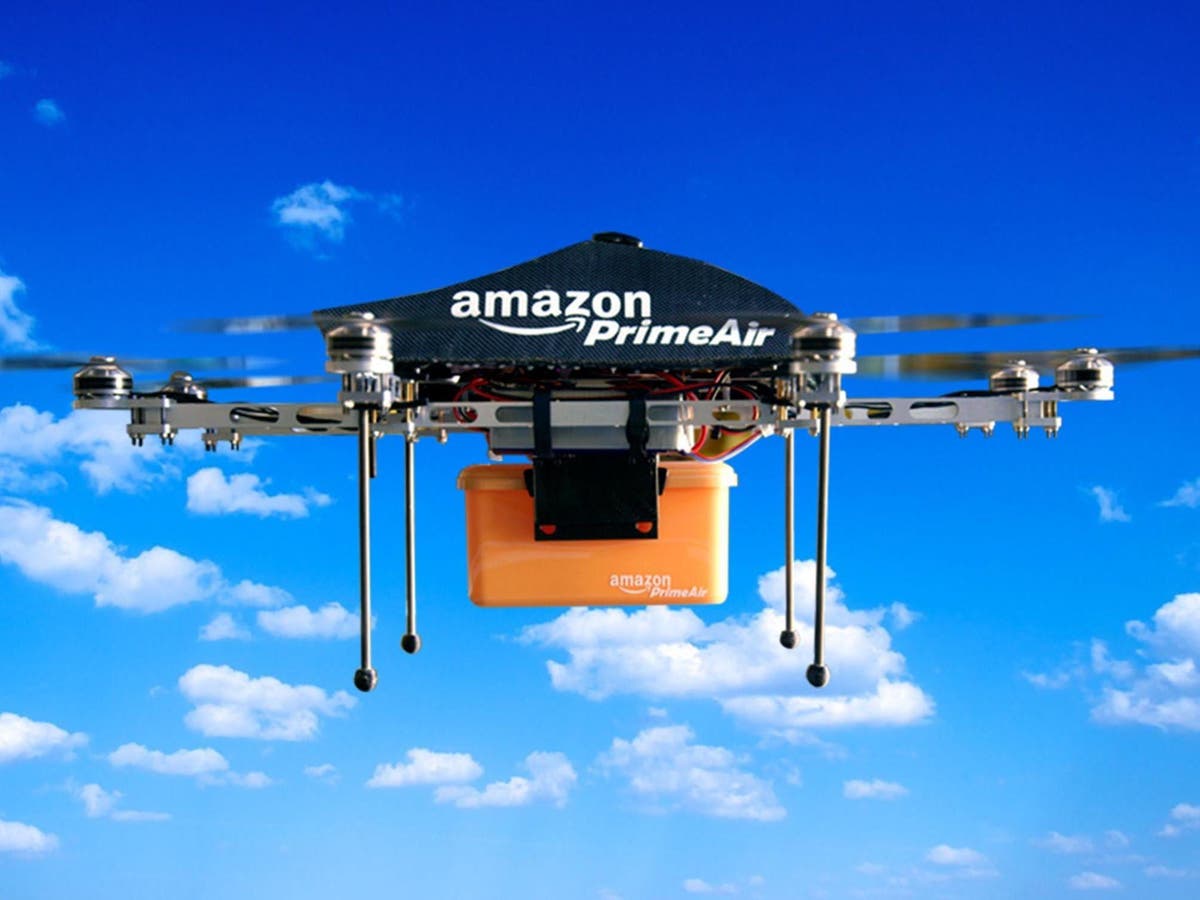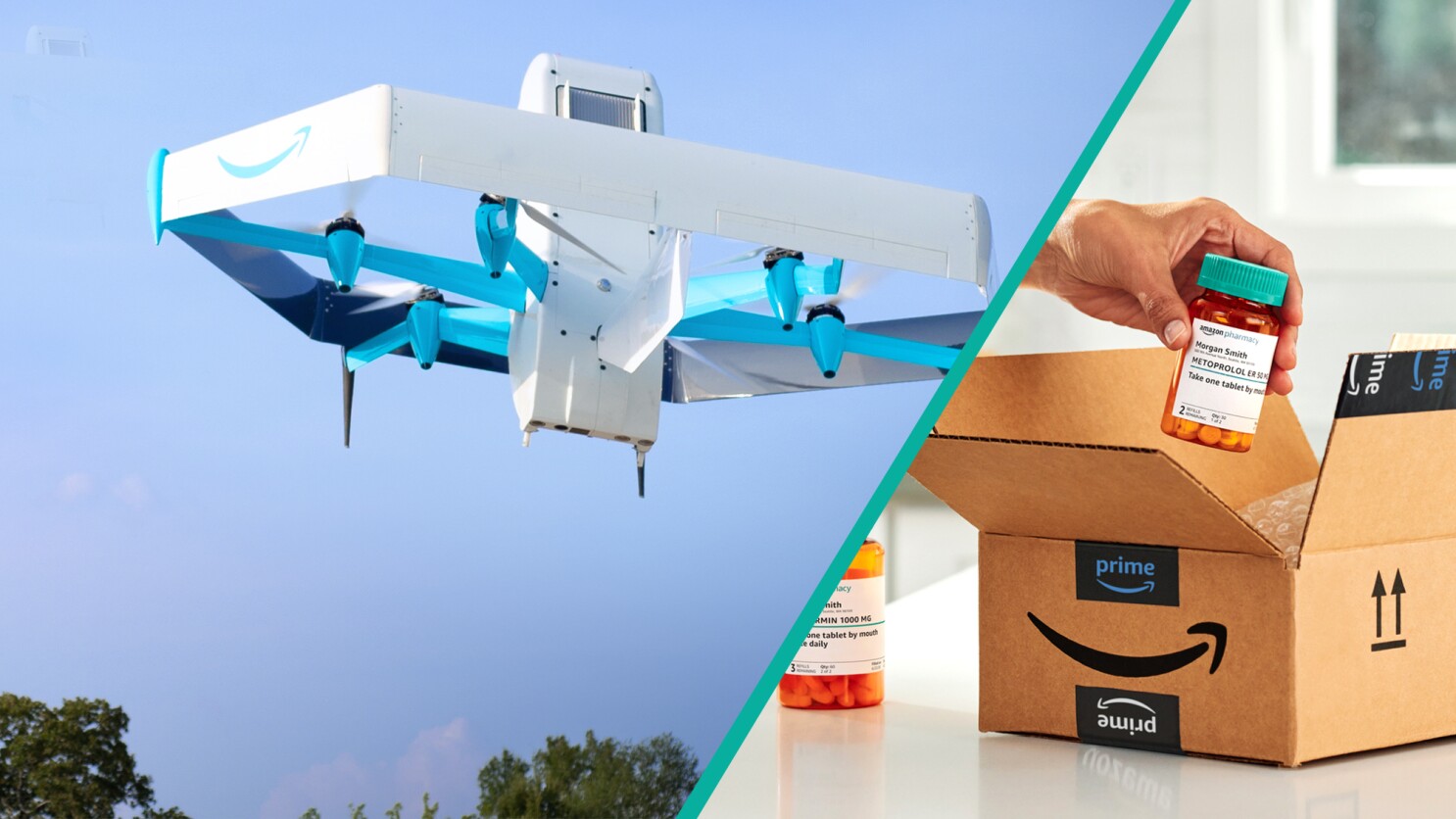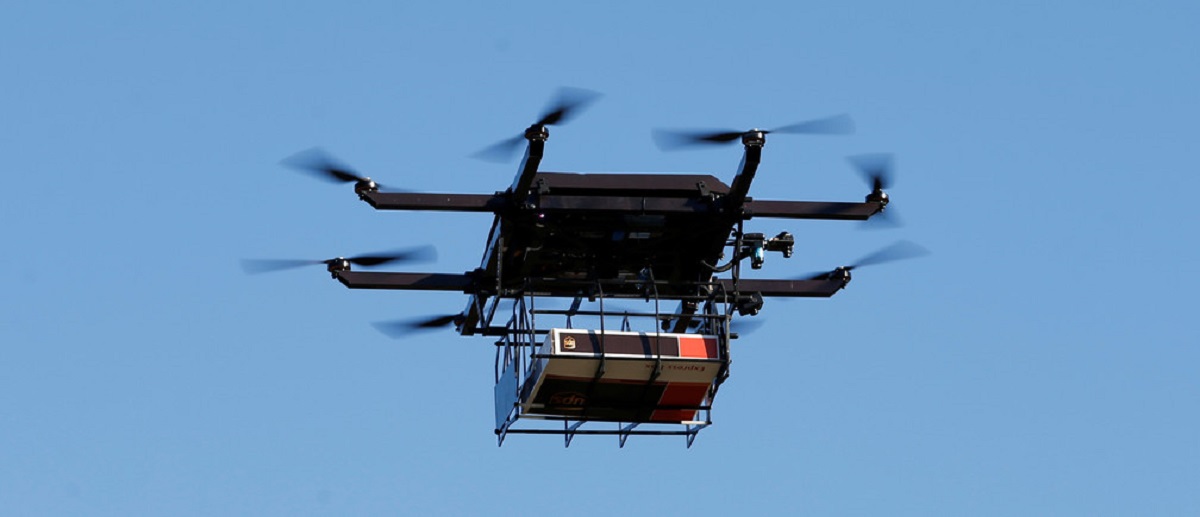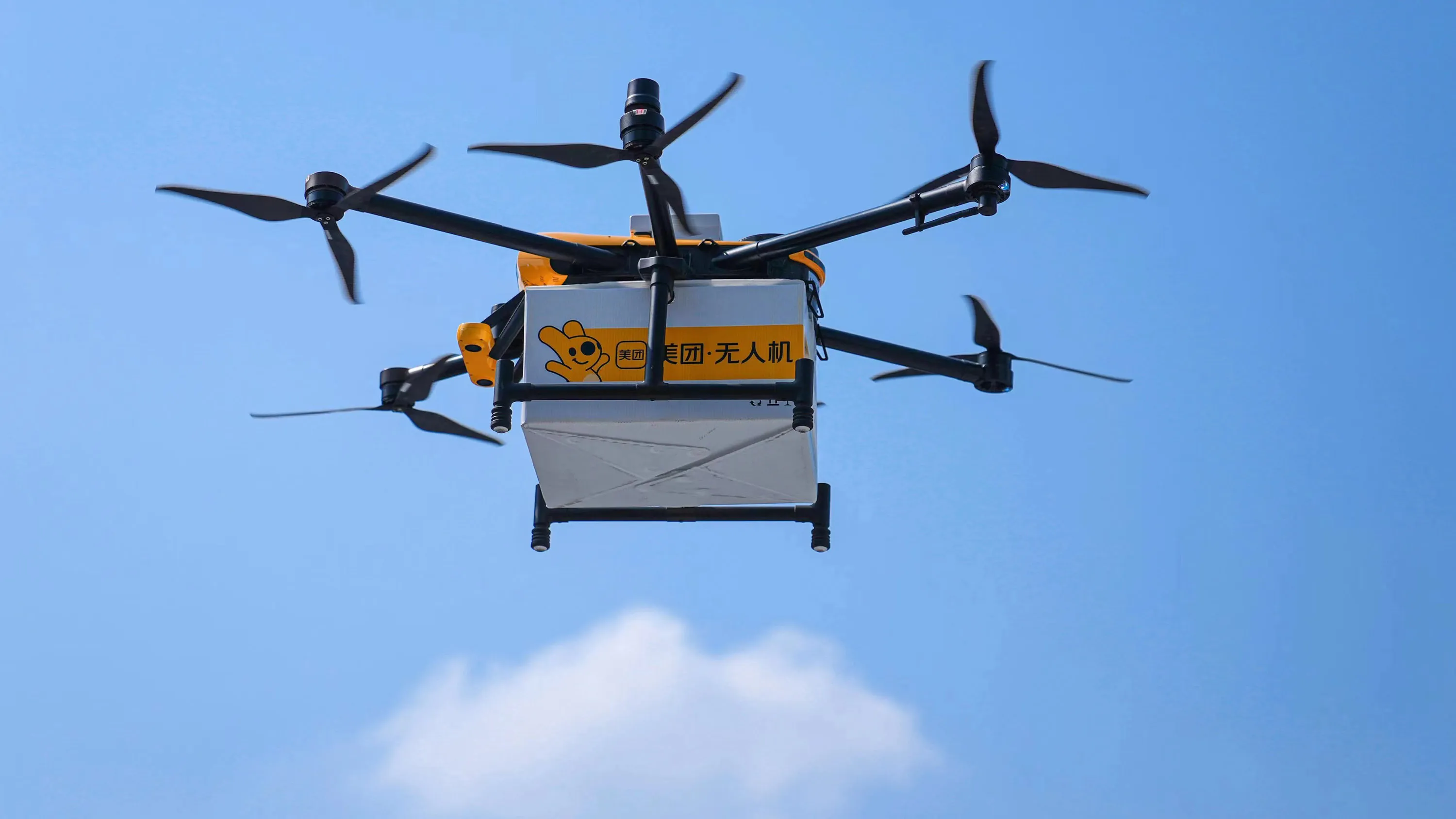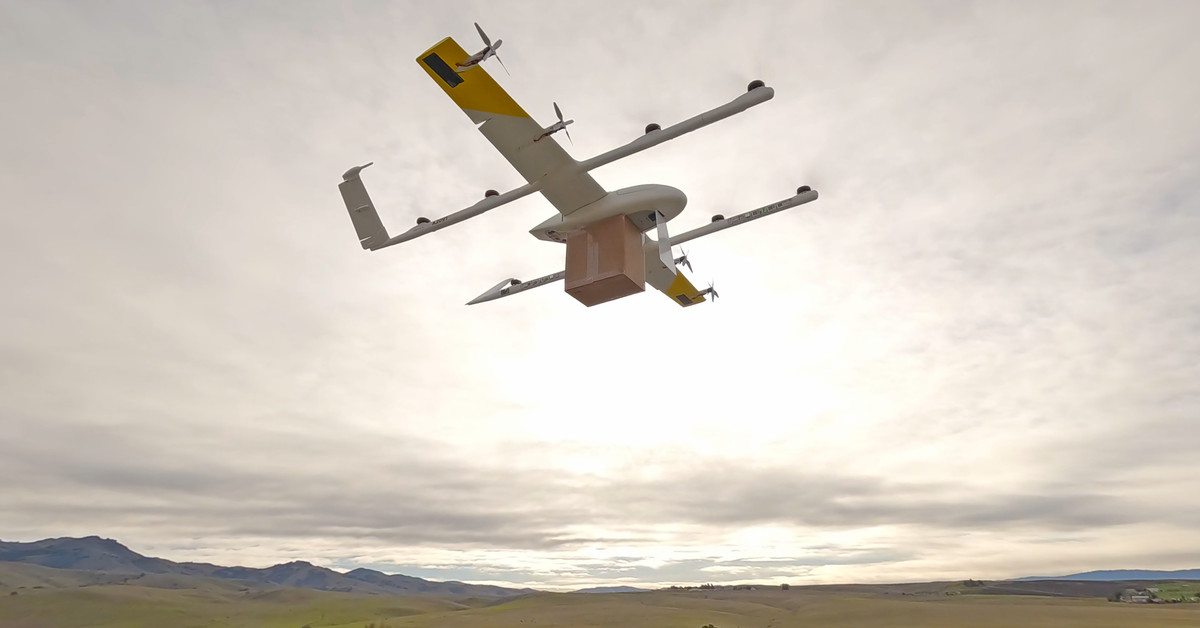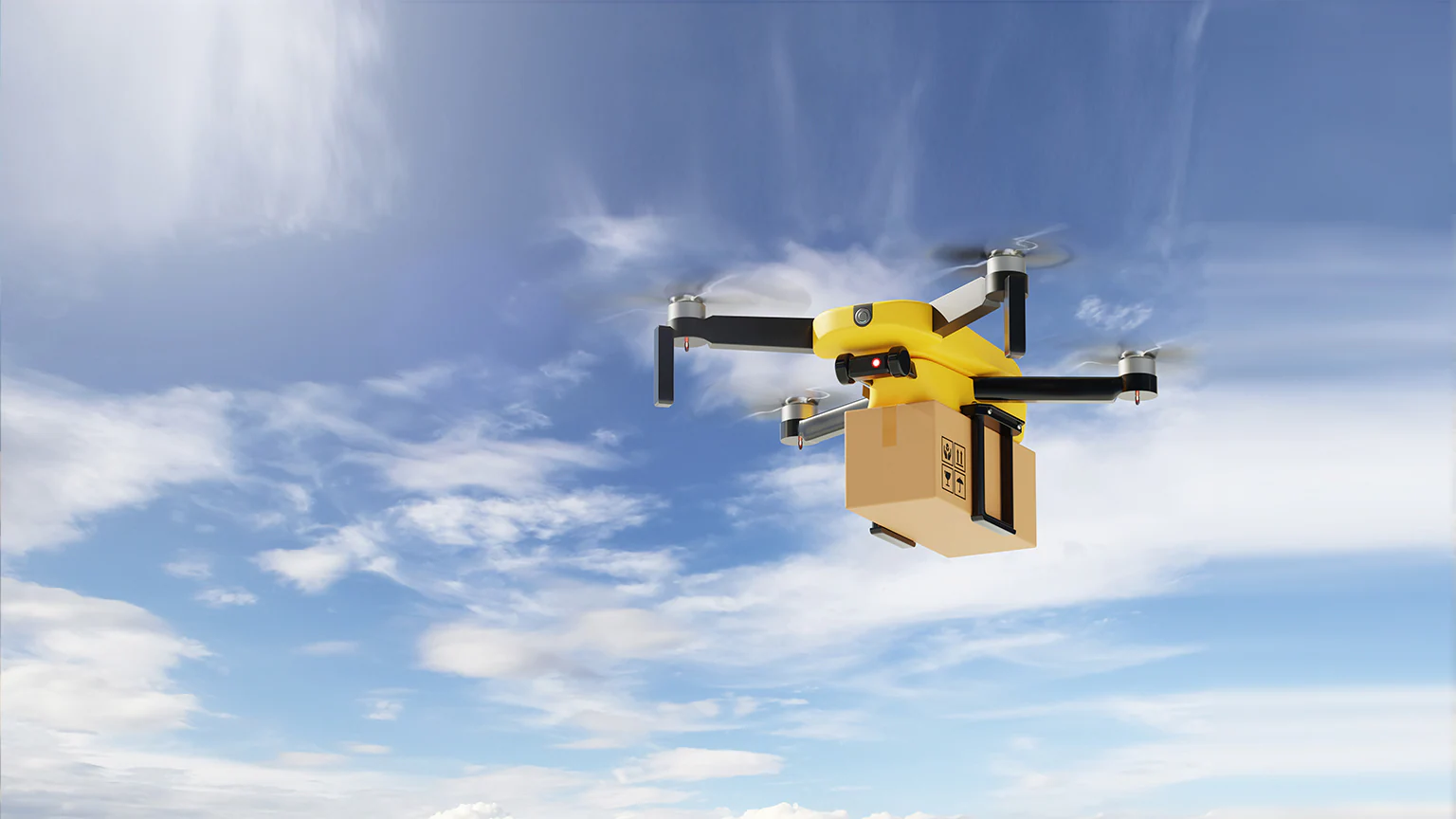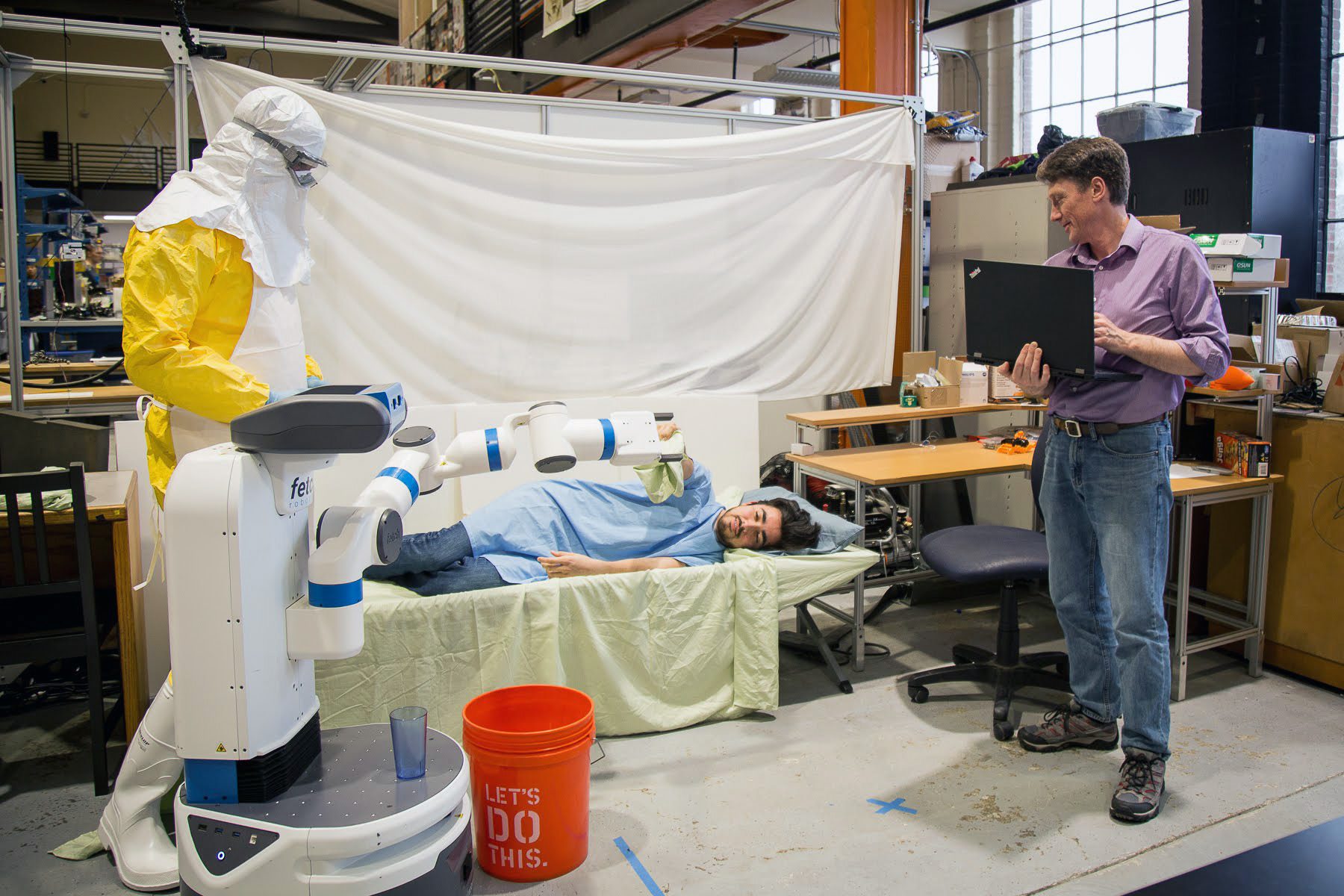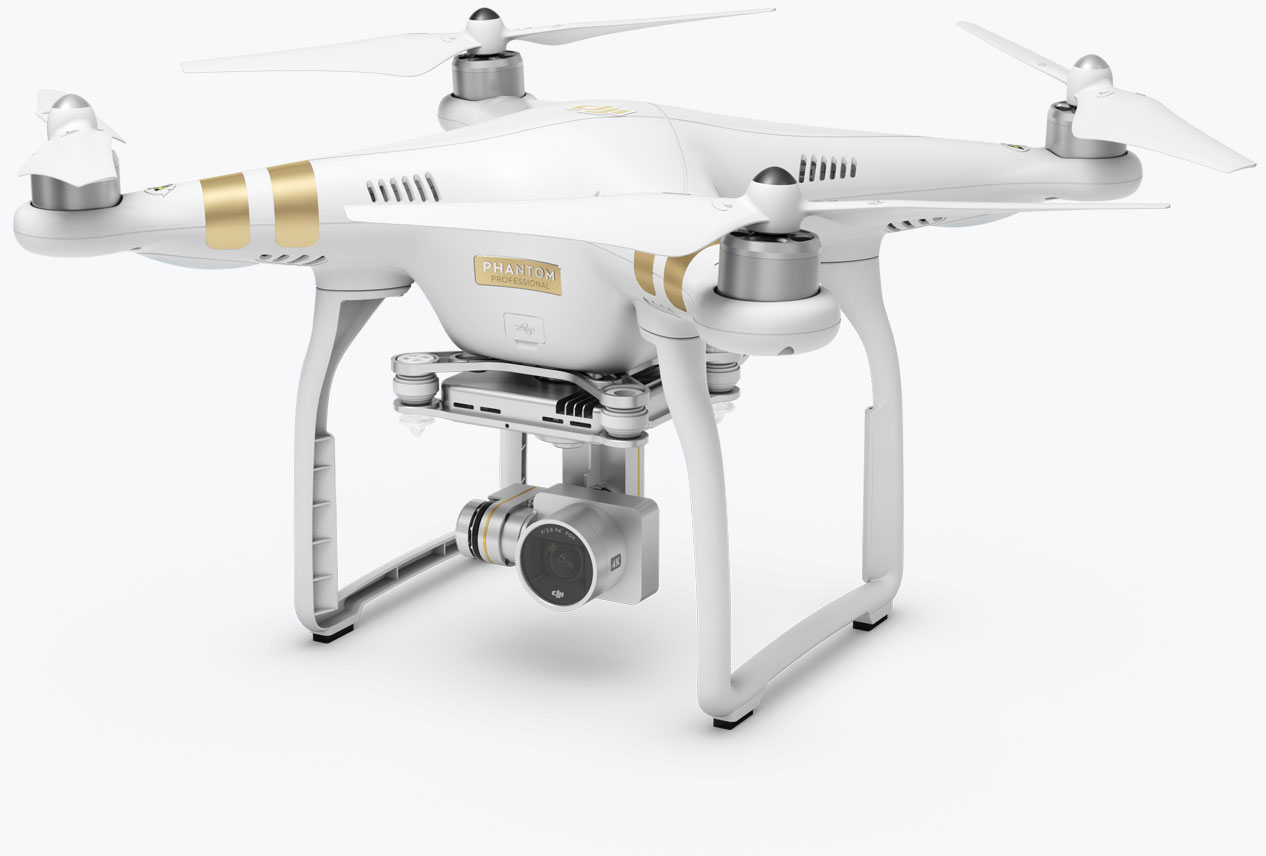Introduction
Drone delivery has grown rapidly in popularity and is reshaping the way goods are transported and delivered. Among the companies at the forefront of this innovation is Amazon, the e-commerce giant renowned for its ability to disrupt traditional industries. Amazon’s drone delivery service has captured the imagination of both consumers and technology enthusiasts, raising excitement about the potential for faster, more efficient deliveries.
With the increasing demand for quick and convenient deliveries, drone technology offers a promising solution. By leveraging unmanned aerial vehicles (UAVs), Amazon aims to revolutionize the logistics industry by providing deliveries in a fraction of the time it would take for traditional methods. From delivering packages to customers’ doorsteps to emergency relief supplies in remote areas, drone delivery has the potential to transform the way goods are transported.
As Amazon continues to develop and refine its drone delivery system, it is important to understand the history, functionality, benefits, and challenges associated with this technology. This article will delve into the details of Amazon’s drone delivery service, examining how it works, the advantages it offers, the obstacles it faces, and what the future may hold for this groundbreaking delivery method.
Note: The following sections will explore the history of Amazon drone delivery, how it works, the benefits and challenges, the current status, and the future prospects of this innovative service.
History of Amazon Drone Delivery
The concept of Amazon drone delivery was first introduced to the public in December 2013 when Amazon CEO, Jeff Bezos, shared a bold vision for the future of package delivery. In an interview, Bezos revealed plans to use drones to deliver packages to customers’ doorsteps within 30 minutes, calling it “Prime Air”. This announcement generated significant excitement and sparked a flurry of discussions about the feasibility and potential impact of drone delivery.
Over the years, Amazon has made impressive strides in the development and implementation of its drone delivery service. In 2014, the company began conducting outdoor drone flights for testing purposes. These initial tests allowed Amazon to gather data and refine the technology, ensuring the safe and efficient delivery of packages.
In 2015, Amazon received approval from the Federal Aviation Administration (FAA) to conduct experimental drone operations in the United States. This marked an important milestone, as it allowed the company to further test its delivery system and gather valuable insights that would inform future improvements.
Continuing its commitment to innovation, Amazon introduced its Prime Air delivery service in 2016. The initial trials took place in select locations, with the focus on ensuring safety, reliability, and efficiency. The service initially catered to a limited range, with packages weighing less than 5 pounds eligible for delivery. As the technology advanced and regulatory restrictions eased, Amazon expanded the scope of Prime Air, aiming to fulfill a wider array of delivery needs.
Amazon has consistently invested in research and development to enhance the capabilities of its drones. The company has pioneered advancements in areas such as sense-and-avoid technology, autonomous navigation, and precision landing. These improvements have been critical in ensuring the safety and effectiveness of the delivery process, allowing drones to navigate obstacles, avoid collisions, and accurately land at designated drop-off locations.
As the technology continues to evolve, Amazon is actively collaborating with regulatory agencies, industry partners, and policymakers to address concerns related to privacy, safety, and airspace management. By working closely with these stakeholders, Amazon is striving to create a comprehensive framework that promotes responsible and widespread adoption of drone delivery.
With its commitment to innovation and continuous improvement, Amazon has firmly established itself as a pioneer in the field of drone delivery. The history of Amazon’s drone delivery service demonstrates the company’s determination to revolutionize the way goods are transported and delivered, and sets the stage for an exciting future in the logistics industry.
How Does Amazon Drone Delivery Work?
Amazon’s drone delivery system incorporates sophisticated technology and meticulous planning to ensure efficient and reliable delivery of packages. Here’s a breakdown of how this innovative delivery method works:
1. Order Placement: Customers place their orders through Amazon’s online platform, selecting eligible items that meet the criteria for drone delivery. These criteria typically include the weight and dimensions of the package.
2. Package Preparation: Once an order is received, the package goes through a typical fulfillment process, where it is picked, packed, and prepared for shipment at an Amazon fulfillment center. The package is then attached to a specially designed drone for delivery.
3. Drone Takeoff: After the package is securely attached to the drone, it takes off from the designated launch area at the fulfillment center. The drone’s flight path is pre-programmed and closely monitored to ensure safety and adherence to regulatory guidelines.
4. Autonomous Navigation: The drone uses advanced sensors, GPS technology, and machine learning algorithms to navigate its designated flight path. It avoids obstacles, adjusts its altitude, and makes necessary course corrections to reach the destination safely and efficiently.
5. Delivery Confirmation: Upon reaching the customer’s designated drop-off location, the drone uses its onboard cameras and sensors to identify a safe landing spot. Once it lands, the package is safely released from the drone, ensuring a secure delivery.
6. Return to Base: After completing the delivery, the drone returns to the fulfillment center to recharge and prepare for the next delivery. This process ensures optimal utilization and minimizes downtime between deliveries.
Throughout the entire process, safety measures are paramount. Amazon’s drones are equipped with redundant systems and built-in fail-safes to mitigate risks and ensure a high level of reliability. They continuously communicate with air traffic control systems and adhere to airspace regulations to prevent any conflicts with other aircraft.
While Amazon’s drone delivery system is designed to be autonomous, human operators are involved in monitoring and supervising operations. These operators have the ability to take control of the drone if necessary, ensuring an extra layer of safety and oversight.
By combining cutting-edge technology and meticulous planning, Amazon has created a drone delivery system that promises faster, more convenient delivery for customers. As the technology continues to evolve, we can anticipate further enhancements and increased efficiency in Amazon’s drone delivery operations.
Benefits of Amazon Drone Delivery
Amazon’s drone delivery service offers a range of benefits that have the potential to revolutionize the way goods are transported and delivered. Here are some key advantages:
1. Speed and Efficiency: One of the primary benefits of drone delivery is its incredible speed. Drones have the ability to navigate through urban areas and avoid traffic, enabling faster and more efficient deliveries. This is particularly advantageous for time-sensitive packages or emergencies where every minute counts.
2. Accessibility: Drone delivery has the potential to overcome geographical barriers and improve accessibility to remote areas. It can facilitate the transportation of packages to locations with challenging terrain or limited infrastructure, making it more convenient for customers in rural or isolated regions to access products and services.
3. Reduced Carbon Footprint: Compared to traditional delivery methods that rely on fossil fuel-powered vehicles, drone delivery is more environmentally friendly. Drones are electrically powered and produce minimal carbon emissions, contributing to the reduction of greenhouse gases. This aligns with Amazon’s commitment to sustainability and its efforts to minimize its carbon footprint.
4. Cost Reduction: By leveraging autonomous drones, Amazon can potentially reduce delivery costs. Drones require less maintenance and do not incur expenses associated with traditional delivery vehicles, such as fuel and driver wages. This cost savings could be passed on to customers, making deliveries more affordable.
5. Improved Safety: Drone delivery can enhance safety by minimizing the need for human drivers on the road. This reduces the risk of accidents and injuries associated with traditional delivery methods. Additionally, Amazon’s focus on implementing advanced sense-and-avoid technology ensures the safe navigation of drones, further enhancing overall safety.
6. Innovation and Customer Experience: Introducing drone delivery showcases Amazon’s commitment to innovation and enhancing customer experience. By offering fast, reliable, and cutting-edge delivery options, Amazon can differentiate itself from competitors and attract tech-savvy consumers who value convenience and efficiency.
It’s important to note that while the benefits of drone delivery are significant, there are still challenges to overcome before the technology can be fully integrated into mainstream logistics operations. However, the potential advantages it offers make drone delivery a promising solution for the future of package transportation.
Challenges of Amazon Drone Delivery
While Amazon’s drone delivery service holds great promise, it also faces several challenges that must be addressed for the technology to become widely adopted. Here are some key obstacles:
1. Regulatory Concerns: The regulatory framework surrounding drone operations is still being developed, and there are specific rules and restrictions to ensure safety and privacy. Amazon and other drone delivery companies must navigate these regulations effectively and work closely with aviation authorities to gain the necessary approvals for widespread drone delivery.
2. Airspace Management: As more drones take to the skies, managing airspace becomes a significant challenge. Ensuring that drones can operate safely alongside other aircraft, including commercial planes and helicopters, requires robust systems for traffic control and collision avoidance.
3. Weather Conditions: Adverse weather conditions such as high winds, heavy rain, or dense fog can pose challenges for drone operations. These conditions can affect flight stability, navigation, and overall safety. Developing drones that can operate efficiently in various weather conditions is crucial.
4. Payload Capacity and Range: Although drone technology has advanced significantly, there are still limitations in terms of payload capacity and range. Current drones used for delivery are primarily designed for lightweight packages and relatively short distances, which restricts the scope of deliveries they can handle. Overcoming these limitations will be vital for expanding the capabilities of drone delivery.
5. Public Perception and Acceptance: Some people may have concerns about privacy, noise, and the potential intrusion of drones. Addressing these concerns and maintaining public trust is crucial for widespread acceptance of drone delivery. Educating the public about the benefits, safety measures, and responsible use of drones can help alleviate these concerns.
6. Security and Theft Prevention: Protecting packages from theft or damage during delivery is a significant challenge for drone delivery systems. Ensuring the security of the packages and developing measures to prevent unauthorized access or tampering will be essential in ensuring the success of drone delivery services.
Overcoming these challenges requires collaboration between industry leaders, regulatory bodies, technology developers, and the public. By addressing these obstacles head-on, Amazon and other companies can pave the way for a future where drone delivery becomes a safe, efficient, and widely adopted method of transportation.
Current Status of Amazon Drone Delivery
Amazon’s drone delivery service, Prime Air, has made significant progress since its initial announcement. While still in the testing and development phase, Amazon has made notable advancements in bringing this innovative delivery method closer to reality.
As of now, Amazon’s drone delivery trials are being conducted in select locations around the world. These trials involve partnerships with regulatory agencies and local communities to gather valuable insights and address operational challenges.
The current focus of Amazon’s drone delivery system is to refine safety measures, enhance flight capabilities, and streamline operations. This includes the development of advanced sense-and-avoid technology to ensure the drones can navigate their environment safely and avoid collisions.
One important aspect of the current status of Amazon’s drone delivery is the collaboration with various stakeholders. Amazon is actively engaged with aviation authorities, such as the Federal Aviation Administration (FAA), to ensure compliance with regulations and obtain the necessary approvals for commercial operations.
Additionally, Amazon is investing in the training of skilled operators who can monitor and supervise the drone operations. These operators play a crucial role in ensuring the safe and efficient delivery of packages, and they have the ability to take over control of the drones if needed.
It is also important to note that Amazon is continuously innovating and improving the technology behind its drone delivery service. The company invests heavily in research and development to enhance flight capabilities, extend the range of deliveries, and increase payload capacity, among other improvements.
While Amazon’s drone delivery service is not yet available on a widespread commercial scale, the progress made so far indicates a positive trajectory toward its integration into mainstream logistics operations. With each successful trial and technological advancement, the feasibility and potential of drone delivery become more evident.
As the technology continues to advance and regulatory frameworks evolve, it is likely that Amazon will expand its drone delivery operations to more locations and offer the service to a broader customer base. The current status of Amazon’s drone delivery signifies a crucial phase in shaping the future of package transportation and emphasizes the company’s commitment to staying at the forefront of innovation.
Future of Amazon Drone Delivery
The future of Amazon’s drone delivery holds immense potential for transforming the logistics industry and revolutionizing the way goods are transported. As technology continues to advance and regulatory frameworks become more accommodating, the possibilities for drone delivery are expanding.
One key aspect of the future of Amazon’s drone delivery is the expansion of the service to a wider range of locations. As regulations evolve and gain clarity, it is expected that Amazon will be able to offer drone delivery in more cities and regions around the world. This expansion will enable faster, more convenient deliveries to a larger customer base.
Moreover, Amazon is investing in research and development to enhance the capabilities of its drones. This includes advancements in areas such as battery life, payload capacity, and navigation systems. The goal is to increase the range and efficiency of deliveries, making drone delivery a viable option for a broader range of products and distances.
In the future, Amazon may also introduce innovative delivery methods. This could include the use of drones for multi-package deliveries or the deployment of autonomous vehicles that act as mobile warehouses for drones, enabling them to cover larger areas without returning to a central location.
Another area of focus for the future of Amazon’s drone delivery is safety and security. The company is continually improving its sense-and-avoid technology, ensuring drones can navigate complex environments and avoid obstacles. Additionally, robust systems for package protection and theft prevention will be developed to maintain the integrity of deliveries.
As drone technology becomes more advanced and widely adopted, there may be new opportunities for businesses and individuals to leverage its capabilities. Amazon could explore partnerships with local businesses or offer its drone delivery platform as a service, enabling others to harness the benefits of this innovative delivery method.
Overall, the future of Amazon’s drone delivery is bright and promising. As technology, regulations, and public acceptance continue to evolve, we can anticipate a world where drone delivery becomes a mainstream method of transportation. The convenience, speed, and efficiency offered by drones have the potential to reshape how packages are delivered, improving the overall customer experience and transforming the logistics landscape.
Conclusion
Amazon’s drone delivery service represents a significant leap forward in the world of logistics and transportation. With its ambitious vision and relentless pursuit of innovation, Amazon has paved the way for the future of package delivery. The history of Amazon’s drone delivery showcases the company’s determination to revolutionize the industry, while the current status demonstrates the progress made so far in testing and refining this technology.
Drone delivery offers numerous benefits such as speed, accessibility, reduced carbon footprint, cost savings, improved safety, and enhanced customer experience. However, there are also challenges to overcome, including regulatory concerns, airspace management, weather conditions, payload capacity, public perception, and security.
Despite these challenges, the future of Amazon’s drone delivery is promising. As the technology continues to advance and regulatory frameworks evolve, we can expect to see more widespread adoption and expansion of drone delivery services. Amazon’s focus on research and development, safety measures, and collaboration with stakeholders positions it as a leader in this industry.
In the coming years, we can anticipate drone delivery becoming a mainstream method of transportation, enabling faster, more efficient, and environmentally friendly deliveries. This innovation will not only benefit businesses and customers but also open up new possibilities for accessibility and improve the overall logistics infrastructure.
As Amazon continues to invest in drone technology and work closely with regulatory bodies, the potential for drone delivery to become a seamless part of our daily lives grows. With each advancement, we move closer to a future where drones gracefully navigate the skies, bringing packages to our doorsteps with unprecedented efficiency.
The advent of Amazon’s drone delivery service is a testament to human ingenuity and the relentless pursuit of progress. It marks an exciting chapter in the evolution of transportation and logistics, shaping a future where the once-unthinkable becomes a tangible reality.







